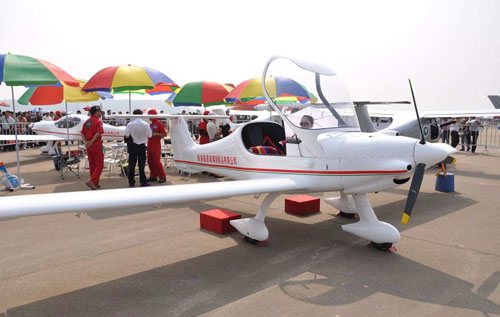Zhejiang province has committed a total of RMB8 billion for airport development before 2020 under the Zhejiang Province Airport Development Plan tabled by the Zhejiang Provincial Development and Reform Commission and Zhejiang Communications. This plan will deliver to all 11 cities in the province at least one airport, either for air transportation or general aviation.

Small-scale, low traffic, remote "General purpose airports" proving to be white elephants
Government throws full weight behind aviation industry development
Zhejiang rovince already has a higher concentration of airports than the nation-wide average, having already built nine general purpose airports that are already in operation. This means the province has 0.85 airport for every 10,000 square kilometers.
Prior to the provincial airport development plan, the local government of the remote Shanqu county in the province’s Wenzhou city was already planning to build one type-one general purpose airport and 11 type-three general purpose airports.
Zhejiang’s neighboring province of Jiangsu is also planning to have 28 airports by 2020, of which 22 will be utility air bases and six will be general purpose airports. Hunan province also plans to build 21 general purpose airports.
“The aviation industry is the final frontier,” the president of Zhejiang Jiulongshan Aviation Club, Yankai Niu, said. Airports usually include a comprehensive range of development including industrial park, airpark or an aviation zone that integrates aviation, real estate, hotel and resort developments. These areas are key economic drivers that contribute significantly to the GDP.
The development of the aviation industry is fully supported by the State government. State Reform and Development Committee member and director of the Civil Aviation Administration of China, Jiaxiang Li, said there is a groundswell of demand for having general purpose airports to connect townships, and the market condition is right for implementing the policy during the nation’s 13th Five-year Plan period. He said the State has identified aviation as a national strategic industry in the working report on aviation development.
State must intervene to stem 70% losses in airport industry
However, while building an airport is easy while making it profitable is proving to be much harder. Zhejiang Jiulongshan Aviation Club’s Mr. Niu said the pay-back period for airport investments is very long, and his club is only just breaking even at present.
Although the aviation industry has an extremely low profit margin, the number of aviation companies that received an operating license in China has risen three-fold in seven years – from 89 in 2008 and to over 250 this year, according to industry expert Xianyong Li. “The pie isn’t getting much larger, but there are a lot more people wanting a slice. So how can everybody get a share and still make a profit?” he said.
The load factors for services on auxiliary routes using general purpose airports are dismally low. A source from Jiangsu province said that, in the provincial government’s desperate bid to boost GDP over the last couple of years, three airports were built within 200 kilometers of each other in the north of the province. The flight time between the airports is just over 20 minutes. In the end, only 10% of the tickets of the inaugural service on the Huaian-Nanjing route, or 20 tickets in total, were sold.
Economist Qinghui Song said 70% of China’s airports are operating at a loss and are turning to the government to bail them out in the end. He thinks the excess airports construction projects, despite losses, are merely politically motivated Potemkin villages. He suggests the central government re-examine and investigate Zhejiang province’s plan to build 40 airports in five years, as taxpayers will eventually have to foot the bill for these mammoth projects.
Whether the growth of general purpose airports will only exacerbate civil aviation airports current losses or bring about a revolution in the aviation industry remains to be seen.(Translation by David)




